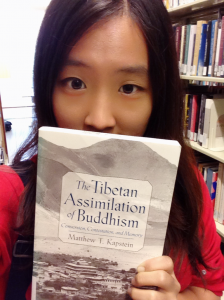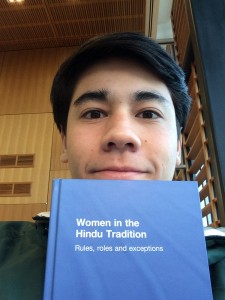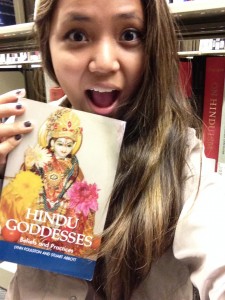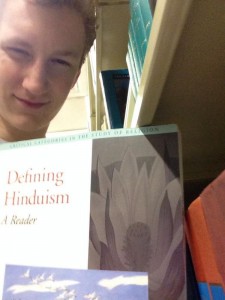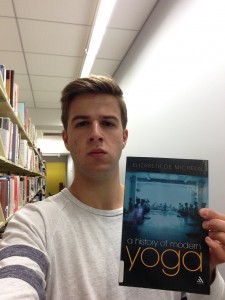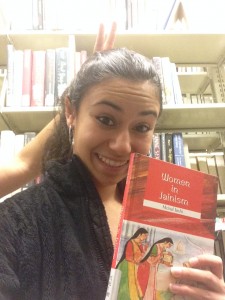I used the library’s online catalog to begin my search for a book using the keywords “Jainism” and “life” because I was interested in how Jains live out their religion in more ways than just yoga and daily rituals. As I was looking for my selection I noticed that the shelves were filled with books on religion (as expected) but each shelf seemed to touch on a different subcategory or theme such as science and religion or religion and anthropology. These topics were near my selection of “Life Force: The World of Jainism” by Micheal Tobias.
After a brief flip through I found this book to be a good selection as it focused only on Jainism and it contained eight clearly divided chapters exploring different aspects of the religion from the ascetics to the laity and even more recent developments in the community of Jainism. I also found it very helpful that the back of the book contained a three-page glossary of terms used in the book. I think using the original terms and vernacular adds authenticity to the work and helps the reader better understand the foundations of Jainism. The chapters ultimately describe the values and ethical decisions associated with Jainism and how they came to be. I am very interested in how these values play out in their daily lives and specifically how Jains came to be known as a relatively successful community. I found it compelling that the final chapters of this book touch on the fact that this religion of restraint has led Jains to reap great rewards without giving up any of their values. This 100-page book offers a easy-to-read and succinct overview of the most important elements of life as a Jain.

